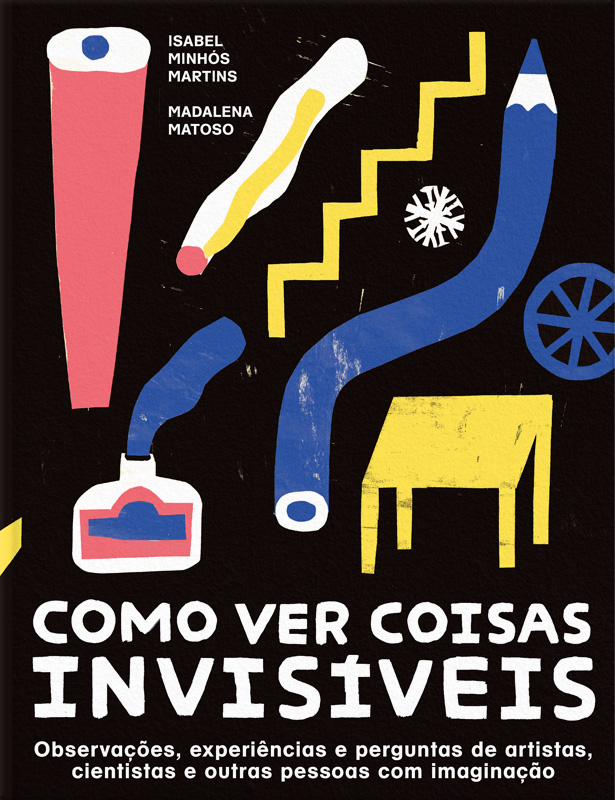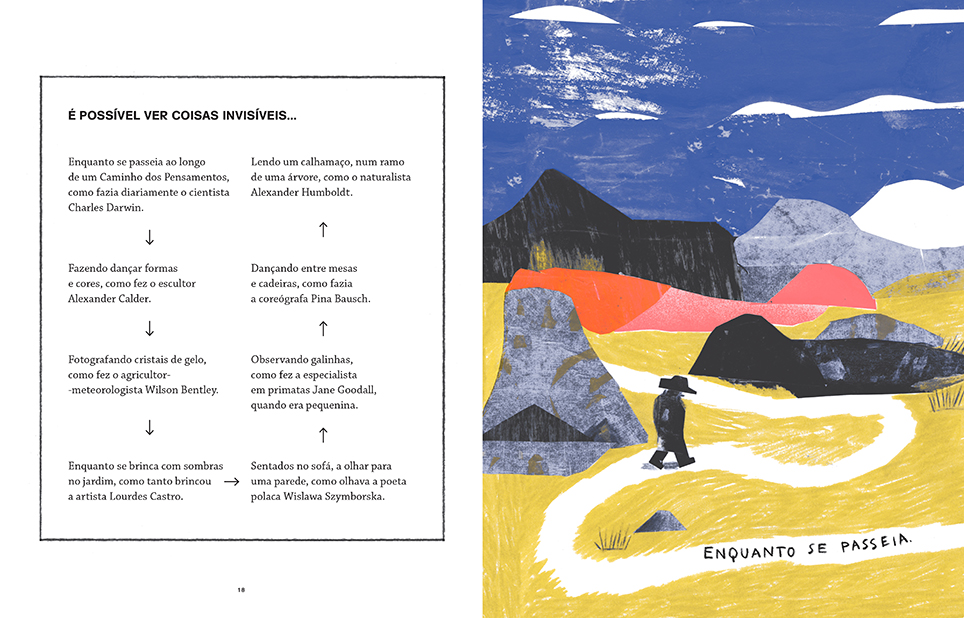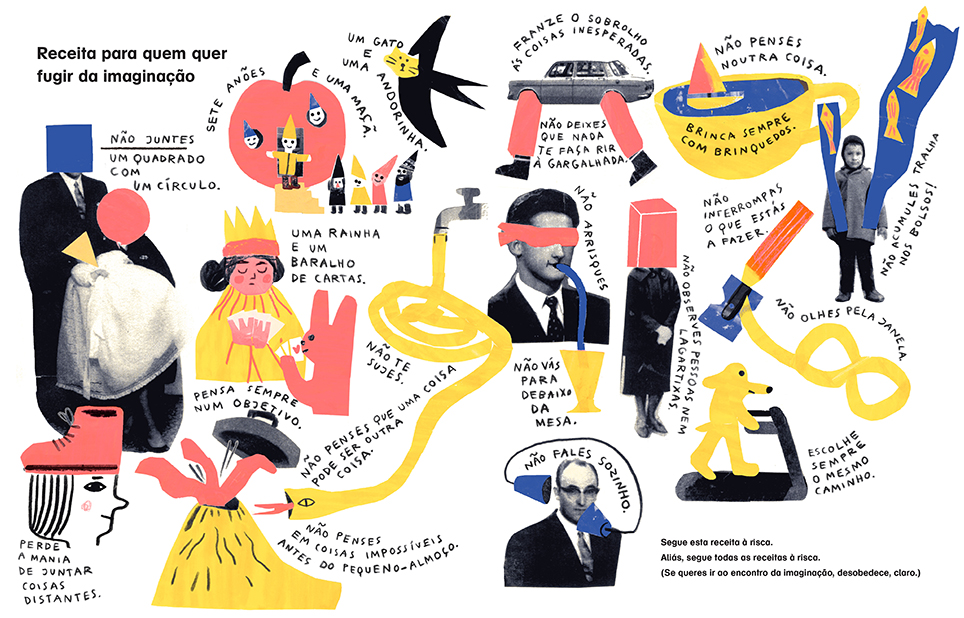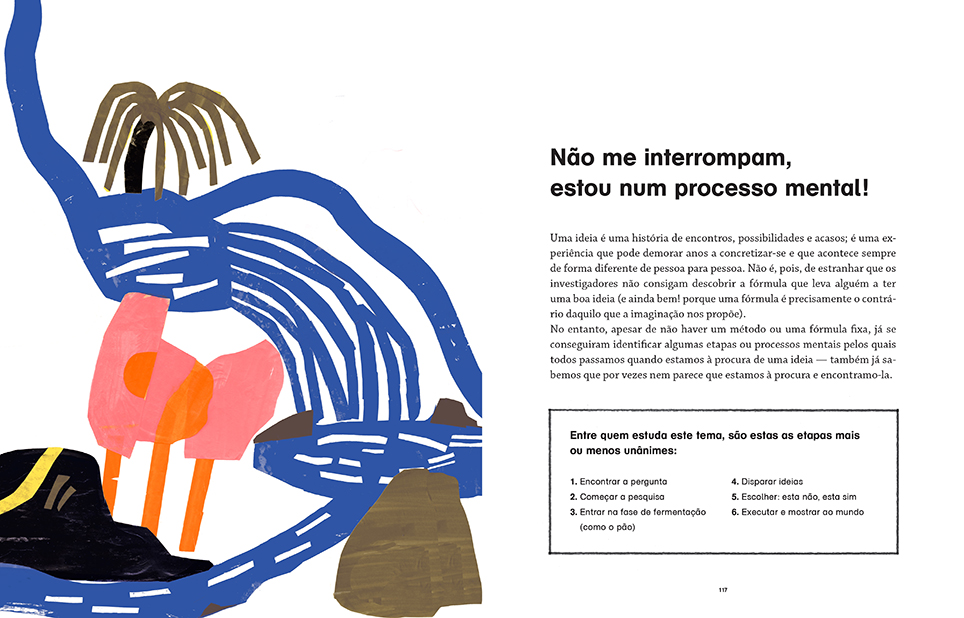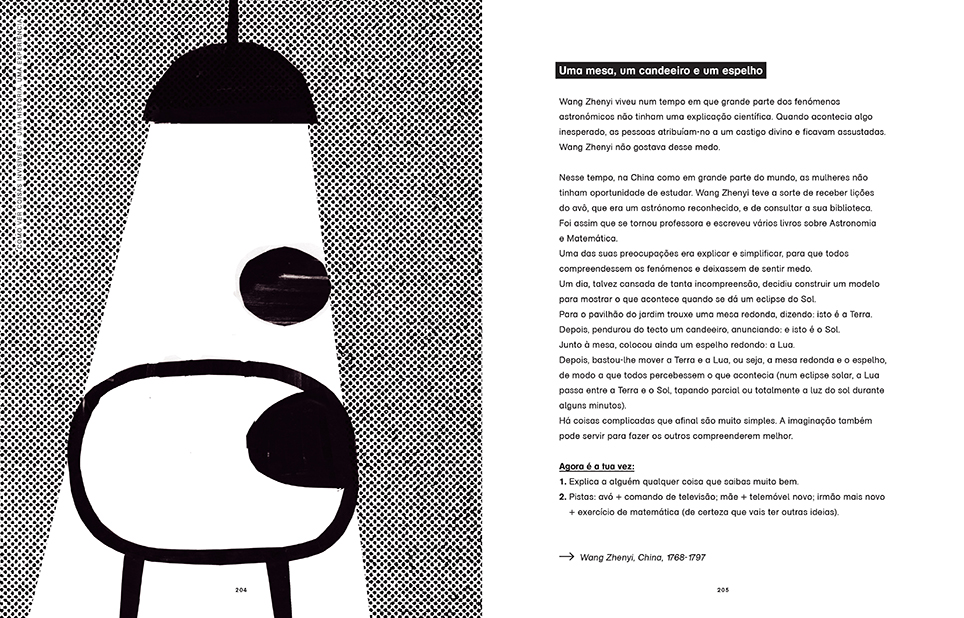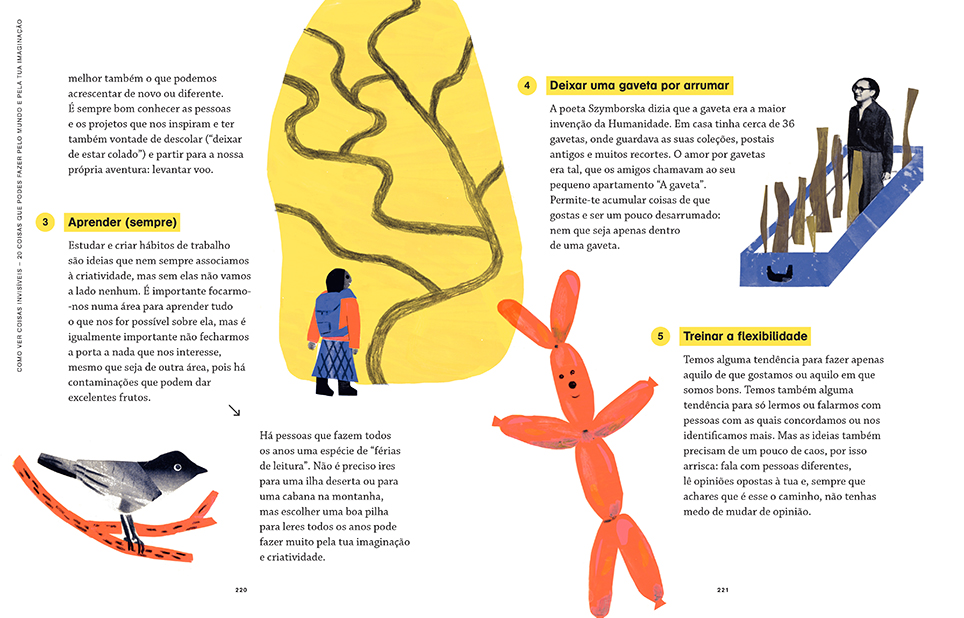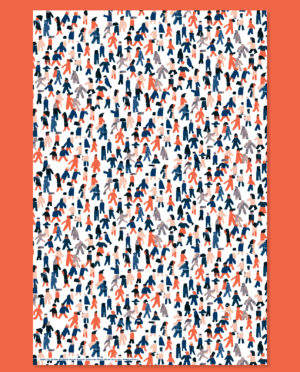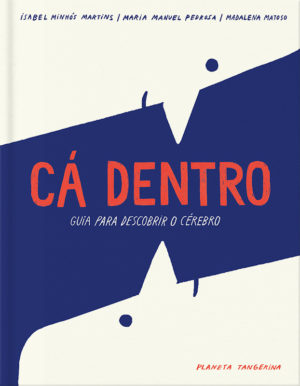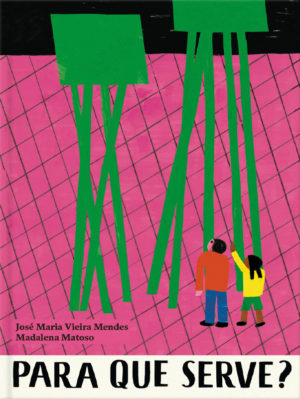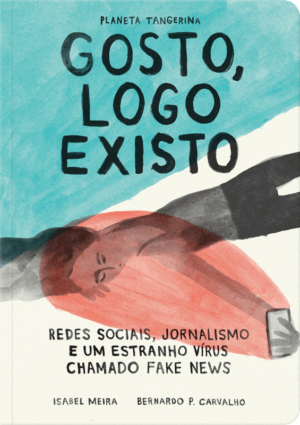Technical specs
Original title: Como ver coisas invisíveis
256 pages / 170 x 220 mm
ISBN: 9789899061033 / RRP: 26,80€
1st edition: October 2021
2nd reprint: September 2024
© Rights sold: Catalan, Chinese (Simplified), Czech, Russian, Spanish
How to see invisible things
(Portuguese edition)
What is imagination and what is it for? Is it related to creativity? Where can each of them lead us?
And on the other hand, can creativity be learnt? Is it inherited? How can you tell a good idea from a weaker one? And what can you do when you don’t have ideas?
In this book, we explore the many stages of a creative process: we go out into the world, searching for elements that can shape creativity; we put the spotlight on science, art and school; and we challenge readers with stories and experiments inspired by scientists, artists and other imaginative individuals.
Get on board!
With the collaboration of Dina Mendonça (philosophy researcher), Patrícia Correia (neuroscientist) and Paulo Pires do Vale (curator).
See also:
Technical specs
Original title: Como ver coisas invisíveis
256 pages / 170 x 220 mm
ISBN: 9789899061033 / RRP: 26,80€
1st edition: October 2021
2nd reprint: September 2024
© Rights sold: Catalan, Chinese (Simplified), Czech, Russian, Spanish
Awards and recognitions
Recommended — National Reading List (Portugal)
What they say
A wonderful book.
Sílvia Souto Cunha, Visão magazine, 20/01/2022
In her digging around, Isabel was also looking for the link between art and science, between play and creation, between pleasure and work. Serious, difficult, interesting and illuminating topics.
Sara Amado, Prateleira-de-baixo, 5/11/2021
(…) it’s a book, but at the same time it’s also an invitation, a manual, a collection of activities with which to think about imagination and creativity. (…) It’s a book to read and re-read.
Portuguese National Reading Programme
This is a book that was designed for children but in which all readers, whatever their age, might experience that thirst for knowledge and for a discovery of new connections between things which they perhaps already know about.. (…) “How to See Invisible Things” explores lines of thinking that can’t be limited to a few lessons of the school curriculum, because they really need to be returned to every day – even when one’s school days are long since passed – with one’s heart, mind and body, ready to be amazed at every turn”.
Sara Figueiredo Costa, 3/01/2021
A book which is as courageous as those who dare to imagine, and pertinent in a world which is increasingly uniform and automated.
Ana Dias Ferreira, Observador, 18/12/2021
How to See Invisible Things appears in Planeta Tangerina’s catalogue as part of an educational series (…). It’s quite possible that it won’t be the last book in this editorial line. But if it were, it would beautifully conclude an exploration of participative knowledge in relation to space, self-knowledge and behaviour.
Andreia Brites, Blimunda magazine (Fundação Saramago), 02/2022
